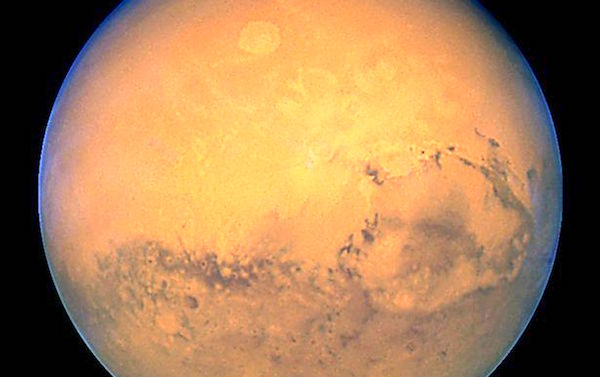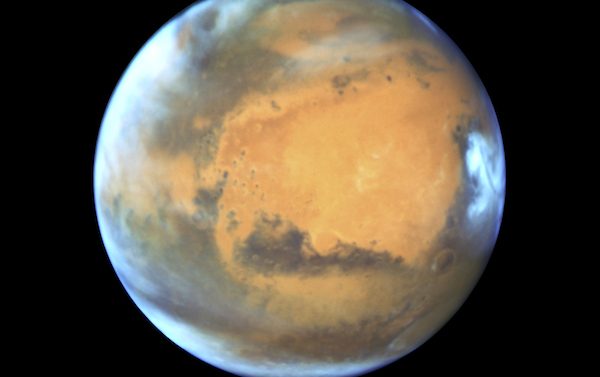Mars is now extremely closer to Earth than it has in more than a decade as it excites stargazers around the world as it appears brighter than usual in the night sky. The Hubble Space Telescope has been catching a lot of images of the recent encounter.
The Mars encounter happens every 26 months, but some encounters are closer than others due to the planet’s elliptical orbit, the United Press International reports. National Geographic astronomy columnist Andrew Fazes the planet crossed paths with Earth on Monday night at a distance of about 46 million miles away.
The last time Mars was closer to Earth was on Aug. 25, 2003, when it came within 34.6 million miles away from us. Astronomers say we can look forward to a similarly close approach in July 2018.
“It takes almost twice as long for (Mars) to make one trip around the sun, so every 26 months the two planets align such that you have a nearly perfect alignment between the sun, Earth and Mars,” Fazes said. “For sky watchers, what this means is that we get to see (Mars) very bright with the naked eye rising in the east after sunset,” he said. “(If) you look towards the eastern sky, you’ll see this bright, orange-hued star-like object. That is Mars.”
The Hubble Space Telescope captured images of the encounter, but even those with small backyard telescopes were able to clearly see the planet’s polar icecaps, deserts and other features.
“I can see on social media (amateur astronomers) are coming up with amazing images,” Fazes said. “Tonight will be the best ones.”
The distance between Mars and Earth varies greatly depending on where in their orbits the two planets are. It takes Mars 687 Earth days to make its trip around the sun, compared with the Earth’s 365 days. That means that Earth makes about two turns around the sun to every one that Mars makes. The two planets pass by each other about once every 26 months, Engadget reported.
But even at this biannual moment of closest approach, the distance between the two bodies can vary quite a bit. Mars’ orbit is highly elliptical, or egg shaped, so sometimes the planets pass within 35 million miles of each other; other times Mars is still 60 million miles away.
Mars hadn’t been that close to Earth in 60,000 years. “Perihelic oppositions” of Mars, when Mars is at its closest to the sun and Earth at the same time, only take place about every 15 to 17 years, Rao added. Luckily for skywatchers, the next one is around the corner; Mars will be even brighter and closer than this year’s approach in June 2018.
The planet is so bright during its closest approach that you can see it with the naked eye. All you need to do is look at the constellation Scorpius low in the southern sky (in the Northern Hemisphere). Mars is above Scorpius’ brightest star Antares, which is called the “rival of Mars” because sometimes the Red Planet passes close by to the star.
To the left of Antares is another planet: Saturn, which glows white. As Mars is closer to Earth, you can easily tell the planets apart from the star because they won’t twinkle as much. The Earth’s atmosphere distorts the star’s light because it far enough away to appear as a single point.
Mars will appear as a brighter red dot in binoculars. With a large telescope, it will be a challenge to pick out features such as its ice cap or clouds, but sometimes amateurs pull up amazing imagery using a combination of good seeing and good computer software.
MSN said Mars is closer to Earth and can be seen right now in the sky by the planet Jupiter, which is flying high in the southwest. While Jupiter is farther from the sun, it is brighter because it is 20 times larger in diameter than the Red Planet.













